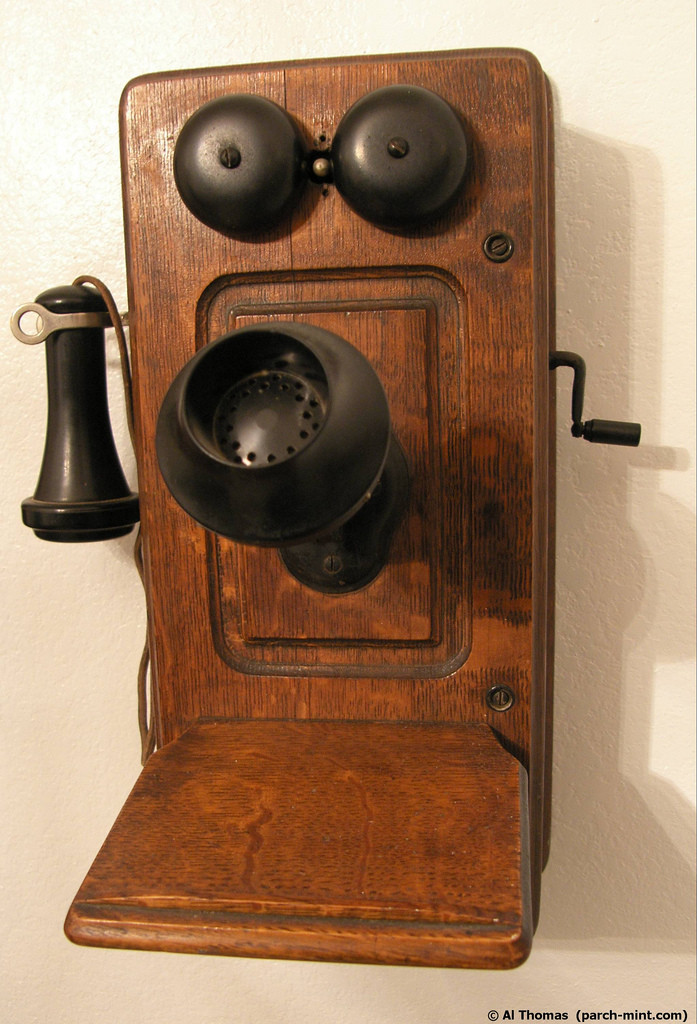One of the most frequently misunderstood aspects of launching a successful business is establishing a sustainable competitive advantage. A particularly powerful source of such advantage comes from the network effect. Many modern tech giants like Microsoft, Google, Facebook, Amazon, and iTunes have thrived because of this effect. However, a compelling historical example to illustrate this concept is the story of the telephone, nearly 150 years ago.
The classic anecdote effectively demonstrates the network effect: A single telephone is practically useless. Two telephones offer minimal value. Once you reach 100 telephones in circulation, the chances of knowing someone with a phone increase, making subscribing to telephone service potentially worthwhile. With 100,000 telephones, it becomes highly probable that you know numerous people with phones, significantly increasing the service’s utility. And when the network expands to 1,000,000 telephones, many of your friends, colleagues, and family members are likely connected, making telephone service indispensable.
While quantifying these value stages isn’t crucial, the core idea resonates quickly.
However, this anecdote often leads to a crucial follow-up question, a second lesson embedded within: How do you actually kickstart a business that heavily depends on the network effect for its ultimate success? The challenge lies in understanding how Alexander Graham Bell managed to sell that very first telephone, and then the tenth, the hundredth, and so on. It’s known that widespread adoption took time; it required approximately 50 years to reach half of U.S. households and another 30 years to reach the remaining half. Furthermore, Bell’s strategy wasn’t based on a freemium model, which shifts the focus from direct sales strategies to navigating the complexities of fund raising.
 Antique telephone on a wooden table, representing early telecommunications
Antique telephone on a wooden table, representing early telecommunications
Delving into historical records reveals two primary business models that Bell employed to bootstrap the telephone business:
Targeting the Elite: Direct Sales to Wealthy Individuals
Initially, Bell targeted exceedingly wealthy individuals. These early adopters purchased pairs of telephones to connect their residences with their businesses or offices. This wasn’t as simple as plugging in a device; it involved negotiations with local telegraph companies to install dedicated wires between buildings. These initial telephone systems were point-to-point, isolated from any broader network. Despite these limitations and the high cost, these sales were vital. They served as powerful demonstrations of the telephone’s potential value, helping Bell persuade the next wave of customers. These pioneering customers were essentially buying exclusivity and cutting-edge technology for direct, private communication.
Strategic Licensing: Building Local Networks
The second, and ultimately more impactful, business model involved licensing telephone equipment to newly formed startup companies. These licensees were granted the rights to provide telephone service within specific towns or cities. In January 1878, the District Telephone Company of New Haven, Connecticut, became the first such licensee. Their immediate challenge was selling their initial telephone subscriptions. Similar to Bell’s direct sales, they likely started by targeting affluent customers who could afford the novelty and potential utility. These initial subscribers often purchased two phones, not just for point-to-point communication, but to connect to a nascent local network.
Remarkably, just one month later, the first-ever New Haven telephone directory was published. It listed 50 names, although telephone numbers, as we know them, were still decades away from being invented. This directory, even without numbers, signified the crucial shift from isolated phone pairs to a connected network, however small.
 Antique telephone on a wooden table, representing early telecommunications
Antique telephone on a wooden table, representing early telecommunications
Over time, the American Telephone & Telegraph Company (AT&T) emerged to connect these independent local companies through “long distance” lines. AT&T strategically consolidated many of these smaller entities into a single, dominant corporation. Eventually, AT&T negotiated a deal with the U.S. government to become a regulated monopoly. This move was explicitly intended to ensure the continued growth of the telephone network effect throughout the 20th century, prioritizing widespread access and standardized service over open competition in this critical infrastructure.
While the history of the network effect, monopolies, and government regulation offers numerous lessons, returning to 1878 brings up another intriguing question about early telephone service: In the era of human operators, without phone numbers or automated billing systems, how did telephone companies charge for their services?
Early Telephone Pricing: A Flat Rate Model
The answer turns out to be surprisingly straightforward. The District Telephone Company of New Haven implemented a simple flat rate pricing model, charging $1.50 per month. With a limited number of subscribers, no long-distance calling, and few additional services, this flat monthly fee made perfect sense. Adjusting for inflation to 2014 dollars, $1.50 equates to approximately $40.00. However, if we consider the significant increase in average earnings since 1878, that $1.50 is more comparable to $350 in today’s economic context. This price point falls somewhere between the cost of modern internet-based phone services and cellular phone plans, both of which often include unlimited nationwide calling.
The telephone network has undeniably expanded exponentially, and consequently, its value has increased dramatically. Yet, thanks to the general trend of technological deflation, the real price we pay for communication access today hasn’t changed drastically compared to nearly a century and a half ago.
This historical pricing model resolves one mystery, but it leads to another: What did Bell charge his licensees for the telephone equipment itself?
Part 2 of this series explores why AT&T never actually sold telephones and why renting, rather than selling, the equipment became the prevailing business model.
Enjoyed this article? Listen to this story and more on The Next Step: Podcast. Step #22: Selling the first telephone, and your first sale
[Image source: Flickr]



